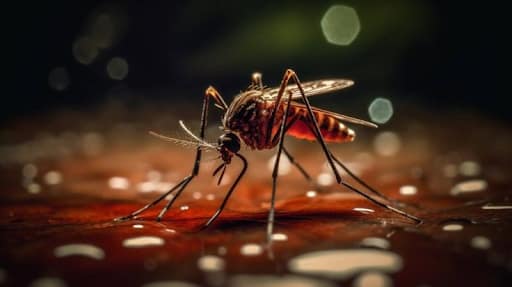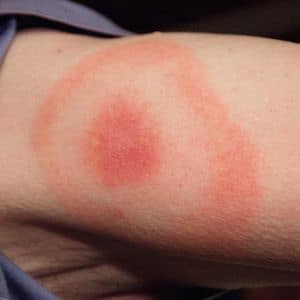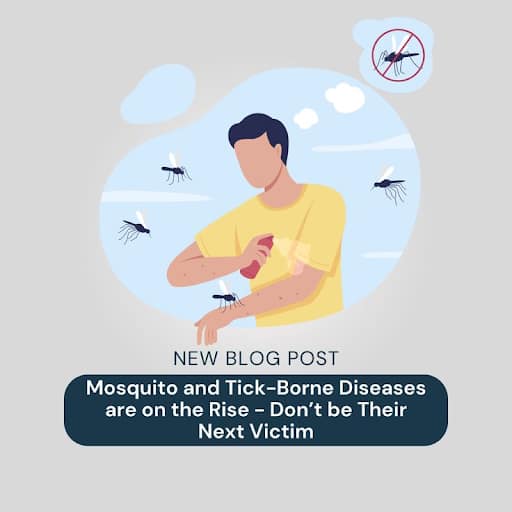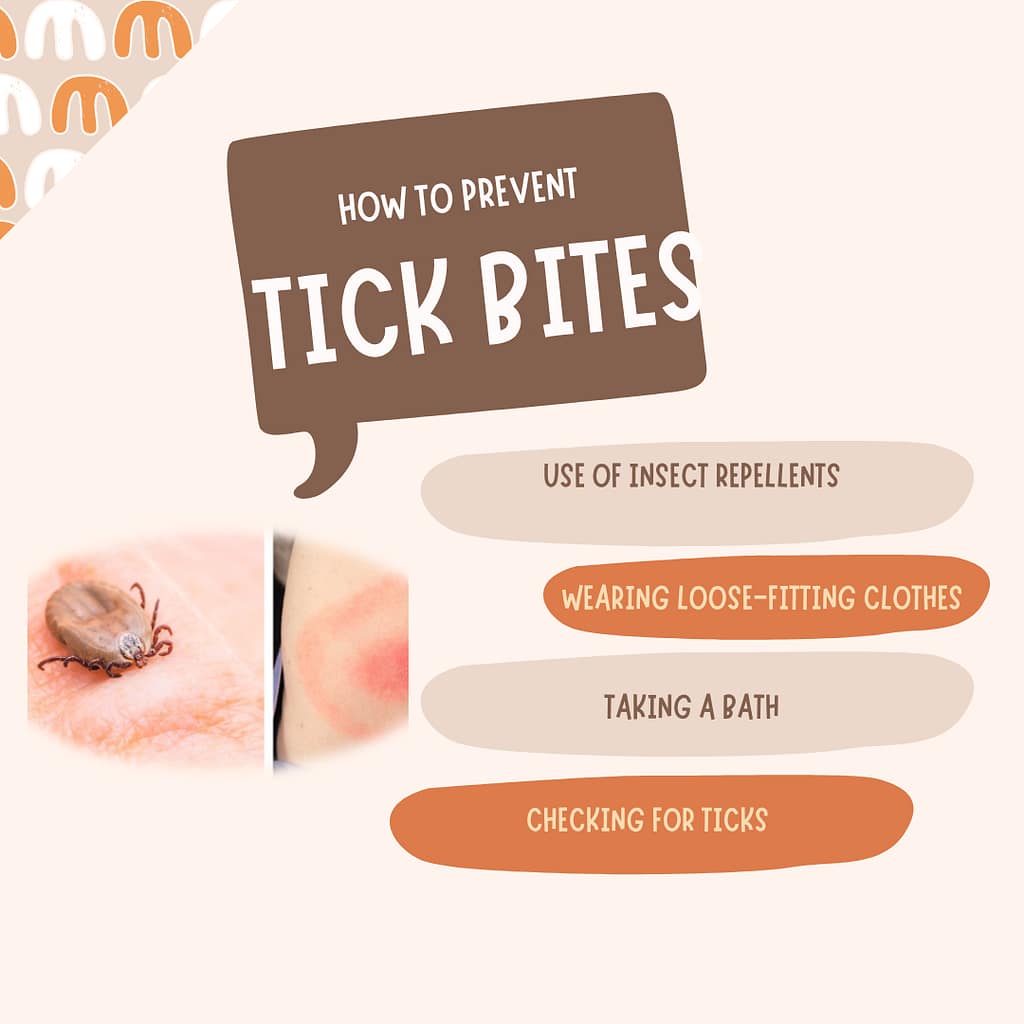
Mosquitoes can bite you and cause an itchy bump on your skin. Mosquitoes act as vectors and cause yellow fever, dengue fever, malaria, chikungunya, encephalitis, etc. You may wonder whether you get Lyme disease from a mosquito.
Lyme disease is a bacterial infection caused by Borrelia burgdorferi. The infection is transmitted through the tick bite. In this blog, we will learn about the transmission of Lyme disease. Can mosquitoes spread Lyme disease? The fact can surprise you.
Can you get Lyme disease from a mosquito?

You get a mosquito bite while participating in outdoor activities. Ticks and mosquitoes can act as vectors, transmitting diseases to humans and animals through their bites.
According to a study, it has been estimated that mosquitoes display less efficiency in acquiring the bacteria from the affected hosts.
The mosquitoes lack the biological capability to acquire the spirochetes and are not able to transmit them through natural means.
According to the Centers for Disease Control and Prevention, mosquitoes cannot spread the disease. Even though bacteria are found in the salivary glands of mosquitoes, they do not pass to a human or an animal.
One of the major reasons is that the mosquito bite is very short. Ticks require hours to days to establish the bacterial infection in an individual.
Are there any other insects that can transmit Lyme disease?
No, Lyme disease is transmitted by ticks. There are no relevant studies to prove that Lyme disease is caused by other insects, such as mosquitoes, flies, mites, etc. Borrelia burgdorferi will not survive in these insects.

What is the difference between a mosquito bite and a tick bite?
No, Lyme disease is transmitted by ticks. There are no relevant studies to prove that Lyme disease is caused by other insects, such as mosquitoes, flies, mites, etc. Borrelia burgdorferi will not survive in these insects.
| Mosquito bite | Tick bite |
|---|---|
| A mosquito bite will result in a small bump accompanied by redness. Rashes will not appear unless they are vigorously scratched. | The most common clinical sign of a tick bite is a skin rash. Rashes will be present around the site of the tick bite. |
| Itching can occur immediately after the mosquito bite due to histamine release. | Itching can occur when the rashes dry. |
| Mosquitoes feed on the body sites where humans cannot easily access them. | Ticks are unable to jump. They climb up and reach the initially opened part. |
| Mosquitoes are usually seen in groups, which makes susceptible to multiple bites. | A tick bites once and drops off. |
What diseases can mosquitoes transmit that are confused with Lyme disease?
Mosquitoes can cause other conditions, similar to Lyme disease.
Chikungunya
Chikungunya is transmitted through the mosquito. There will be replication of the virus within the salivary glands of the mosquito. The infection will be transmitted to the host when it bites them.
Clinical symptoms
- Severe joint pain that lasts for months or years.
- Headache
- Fatigue
- Skin rashes
Malaria
Malaria is a chronic condition that is transmitted through the bite of a female Anopheles mosquito. In 2023, 263 million cases of malaria were reported.
Zika virus
Zika virus is caused by the bite of a female Anopheles mosquito. Zika virus can cause chronic infection in pregnant women, leading to birth defects.
Clinical symptoms
- Maculopapular rashes
- Non-purulent conjunctivitis
- Fever
- Myalgia
- Microcephaly
Dengue fever
Dengue is a viral infection that is transmitted through mosquitoes. It has been determined that around 100-400 million infections occur annually.
- Swelling of glands
- Joint and muscle pain
- Tenderness beneath the eyes
- Severe pain in the abdominal region
- Weakness
- Bleeding in the gums

How can I protect myself from mosquito and tick bites?
- Use EPA-registered insect repellents. These repellents can be applied to the body parts. These repellents are considered safe for pregnant and breastfeeding women.
- You can use insect repellents on bare skin. While using the repellents, avoid contact with the eyes and mouth. Before applying the repellents, you can use the sunscreen initially.
- You can wear loose-fitting clothes to protect yourself from mosquito and tick bites. In order to get maximum protection, you can buy clothes that are treated with a synthetic insect repellent called permethrin.
- After coming home, you can check for ticks. If noted, remove the tick as fast as possible.
- Take a bath within 2 hours to remove any unattached ticks.
- You can use a screen to prevent the entry of mosquitoes.

How does the transmission of Lyme disease differ from that of mosquito-borne diseases?
Lyme disease is spread in humans through ticks. For the infection to occur, the tick must be attached to the surface of the host for at least 36-48 hours. The bacteria reaches the salivary glands of the tick from the midgut, which will be passed to the bloodstream of the host.
Removal of the tick can significantly reduce the risk of infection. Mosquito-borne diseases, like chikungunya, dengue, etc., are caused by viruses or protozoans.
There is a vast difference in the environmental habitats of these vectors. Ticks are usually found in grassy regions, and the preventive measures include tick repellents, wearing long sleeves, etc.
Lyme disease requires prolonged attachment of the tick to the host’s surface. Mosquito-borne diseases are spread through saliva. It is crucial to understand the differences to ensure adequate prevention.
Conclusion
- Ticks are responsible for the transmission of Lyme disease.
- Mosquitoes cannot spread Lyme disease as they cannot acquire Borrelia burgdorferi.
- It is crucial to use protective clothes and insect repellents to prevent the transmission of Lyme disease.
References
- Pekľanská M, Kuníková K, Vlčková R, Slabová H, Hartmann D, Volfová K, et al. Experimental evidence rules out mosquitoes as vectors of Lyme disease. Parasites & Vectors. 2025 Jun 4;18(1):206 [cited 2025 Jun 11].
- Simon C, Matuschka FR, Ribeiro JMC. Who bites me? A tentative discriminative key to diagnose hematophagous arthropods. BMC Ecology. 2020;20(1):20. [cited 2025 Jun 11].
- Centers for Disease Control and Prevention (CDC). About West Nile Virus [Internet]. Atlanta, GA: CDC; updated 15 May 2024 [cited 11 Jun 2025].


